What to Eat and Where to Find It
Oman, a nation steeped in history and tradition, offers a culinary landscape as rich and diverse as its culture. Omani cuisine is a delightful fusion of Arabian, Persian, Indian, and African influences, resulting in flavors that are both unique and deeply satisfying. For the food lover, exploring Oman’s gastronomy is an adventure not to be missed. This guide will introduce you to must-try dishes and the best places to savor them.
The Essence of Omani Cuisine
At the heart of Omani cooking lies a blend of spices such as saffron, turmeric, and cardamom, used to create dishes that are aromatic and flavorful. Meals often center around rice, meat (usually lamb or chicken), and seafood, accompanied by fresh fruits and dates. Hospitality is a cornerstone of Omani culture, and sharing food is a cherished tradition.
Must-Try Omani Dishes
1. Shuwa
Description: Shuwa is Oman’s national dish, traditionally prepared for special occasions like Eid. It consists of marinated lamb or goat wrapped in banana or palm leaves and slow-cooked in an underground sand oven for up to two days.
Flavor Profile: The meat becomes incredibly tender, infused with spices like cumin, coriander, and cloves.
Where to Try: While it’s a festive dish, some restaurants like Bin Ateeq in Muscat offer Shuwa year-round.
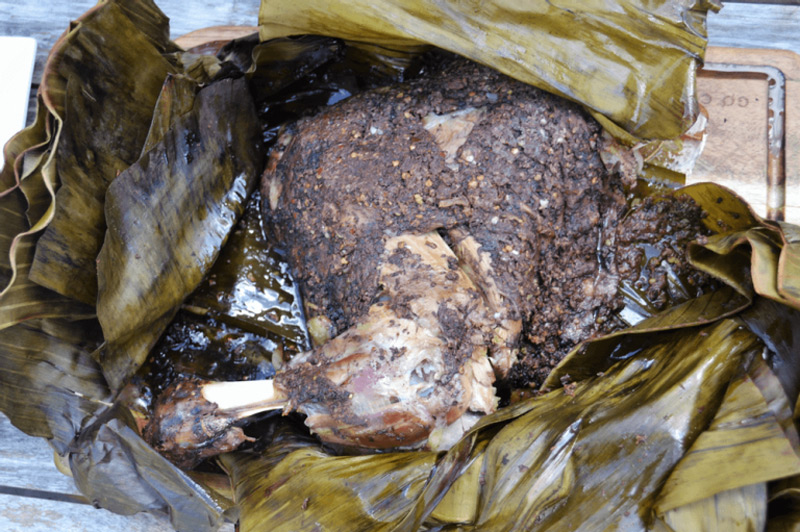
2. Majboos (Kabsa)
Description: A fragrant rice dish similar to biryani, Majboos is cooked with saffron, spices, and either chicken or lamb.
Flavor Profile: Aromatic with a hint of spice, often garnished with nuts and raisins.
Where to Try: Ubhar Restaurant in Muscat is known for its authentic Majboos.
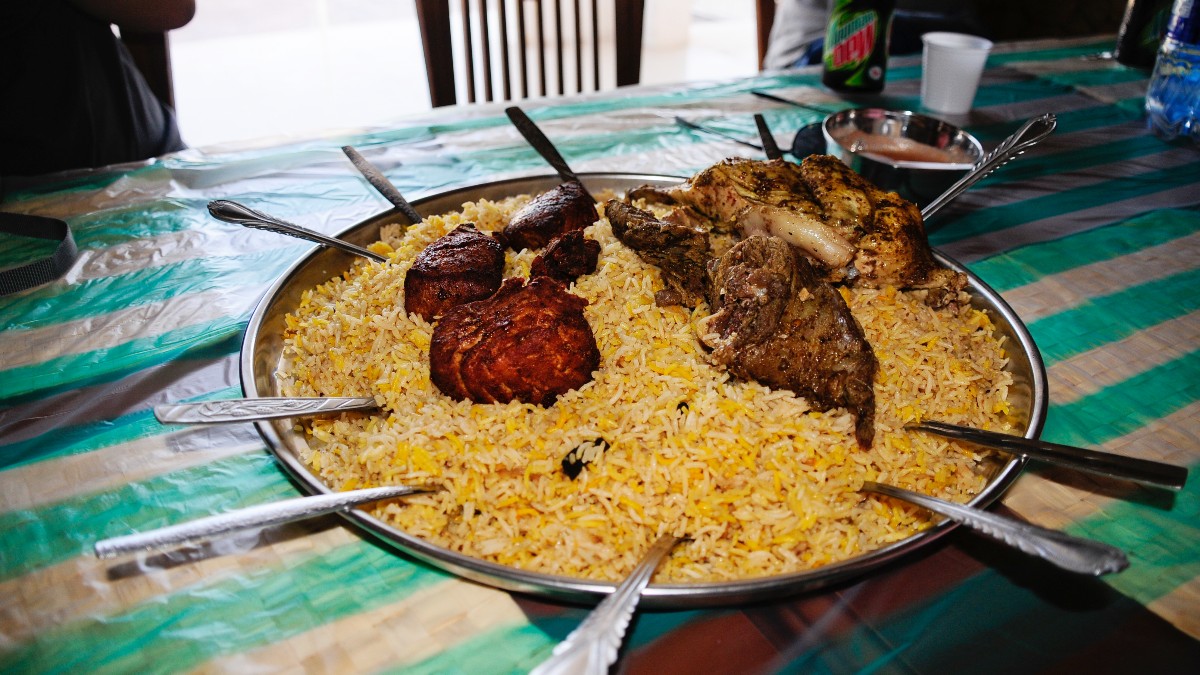
3. Mashuai
Description: This dish features whole spit-roasted kingfish served with lemon rice.
Flavor Profile: The fish is tender and flaky, complemented by the citrusy zest of the lemon-infused rice.
Where to Try: Coastal restaurants in Sur and Mutrah serve some of the freshest Mashuai.

4. Halwa
Description: A sweet, gelatinous dessert made from sugar, honey, rosewater, and a blend of spices like cardamom and saffron, often garnished with nuts.
Flavor Profile: Rich and sweet with floral undertones.
Where to Try: Al Hosni Omani Sweets in Muscat offers a variety of Halwa.
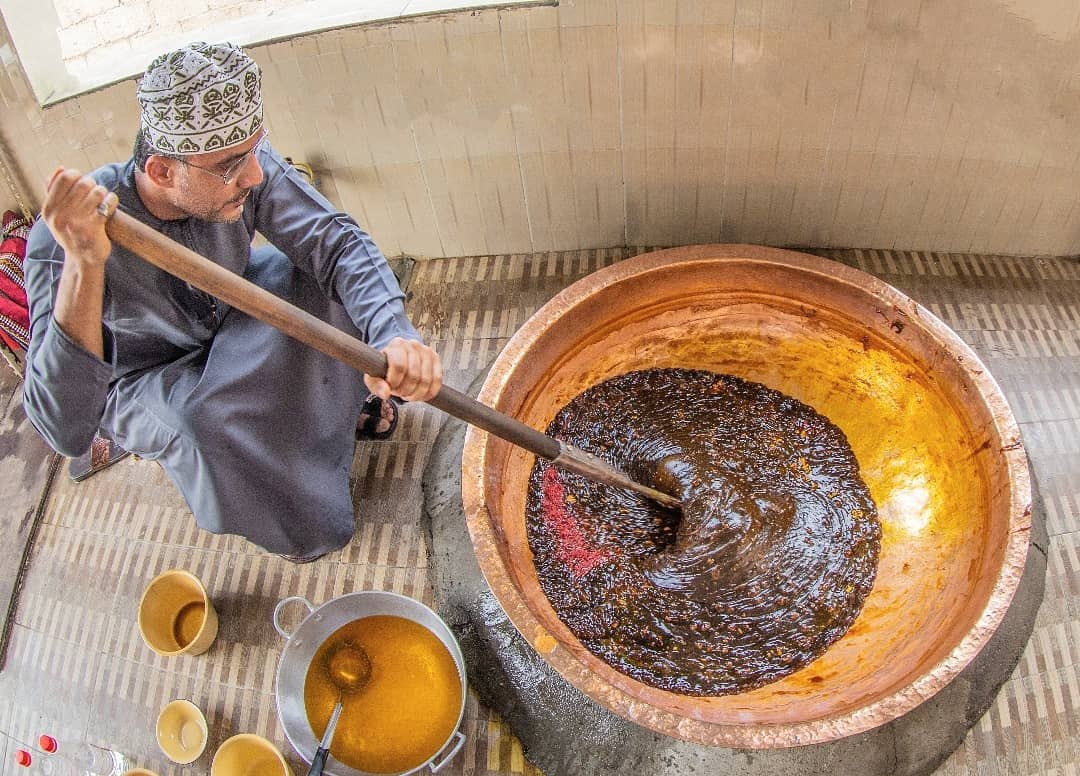
5. Dates and Kahwa (Omani Coffee)
Description: No Omani meal is complete without a serving of dates and a small cup of Kahwa, a strong coffee flavored with cardamom.
Flavor Profile: The bitterness of the coffee pairs perfectly with the sweetness of the dates.
Where to Try: Available in most cafes and as a welcoming gesture in hotels and guesthouses.

6. Harees
Description: A hearty dish made from boiled wheat mixed with meat (usually chicken or lamb) and seasoned with spices.
Flavor Profile: Creamy and porridge-like, subtly flavored.
Where to Try: Kargeen Restaurant in Muscat offers traditional Harees.

7. Mishkak
Description: Skewered and grilled pieces of marinated meat, often beef, lamb, or chicken.
Flavor Profile: Smoky and savory, served with spicy tamarind chutney.
Where to Try: Street vendors at Mutrah Corniche are popular spots for Mishkak.
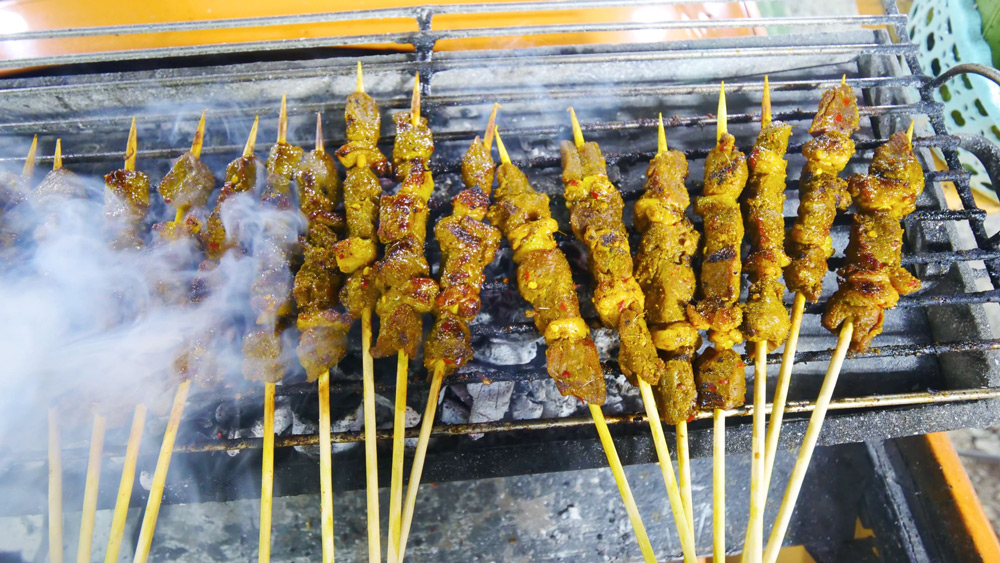
8. Omani Bread (Khubz Ragag)
Description: A thin, crispy bread made on a hot griddle, sometimes sprinkled with sesame seeds.
Flavor Profile: Light and slightly nutty, often used to scoop up stews and sauces.
Where to Try: Local bakeries and markets throughout Oman.
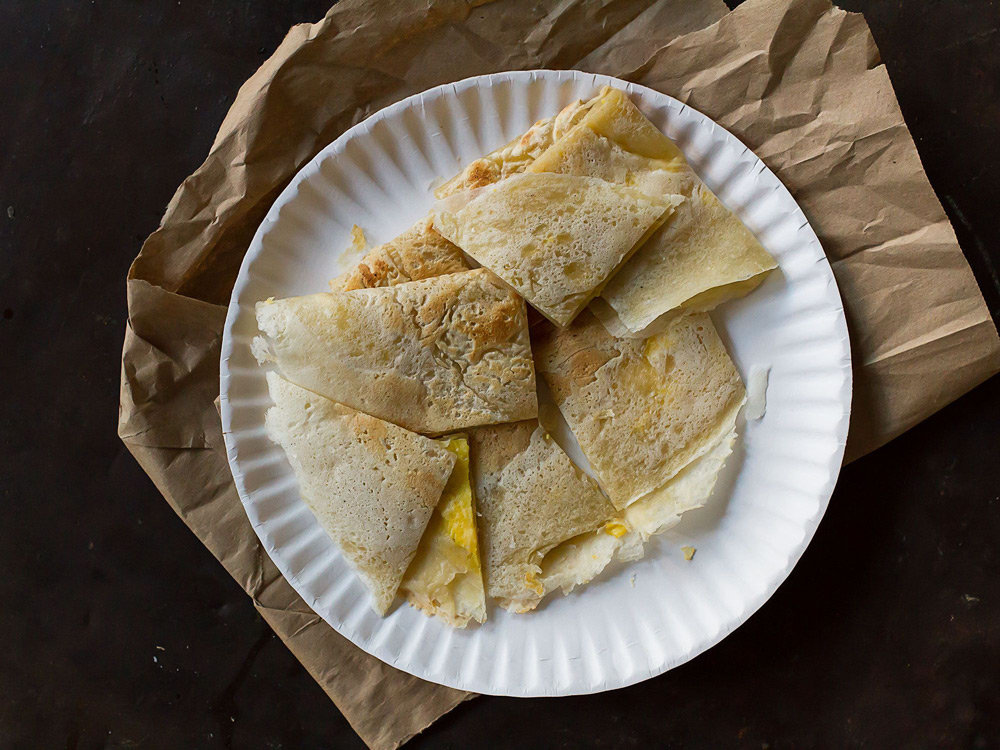
9. Sakhana
Description: A sweet soup made from dates, molasses, and wheat, typically eaten during Ramadan.
Flavor Profile: Warm, sweet, and comforting.
Where to Try: Seasonal availability; some traditional restaurants may offer it upon request.

10. Lokhemat
Description: Deep-fried dough balls drizzled with date syrup or honey.
Flavor Profile: Crunchy on the outside, soft on the inside, sweet and sticky.
Where to Try: Dessert menus in restaurants like Bait Al Luban in Mutrah.
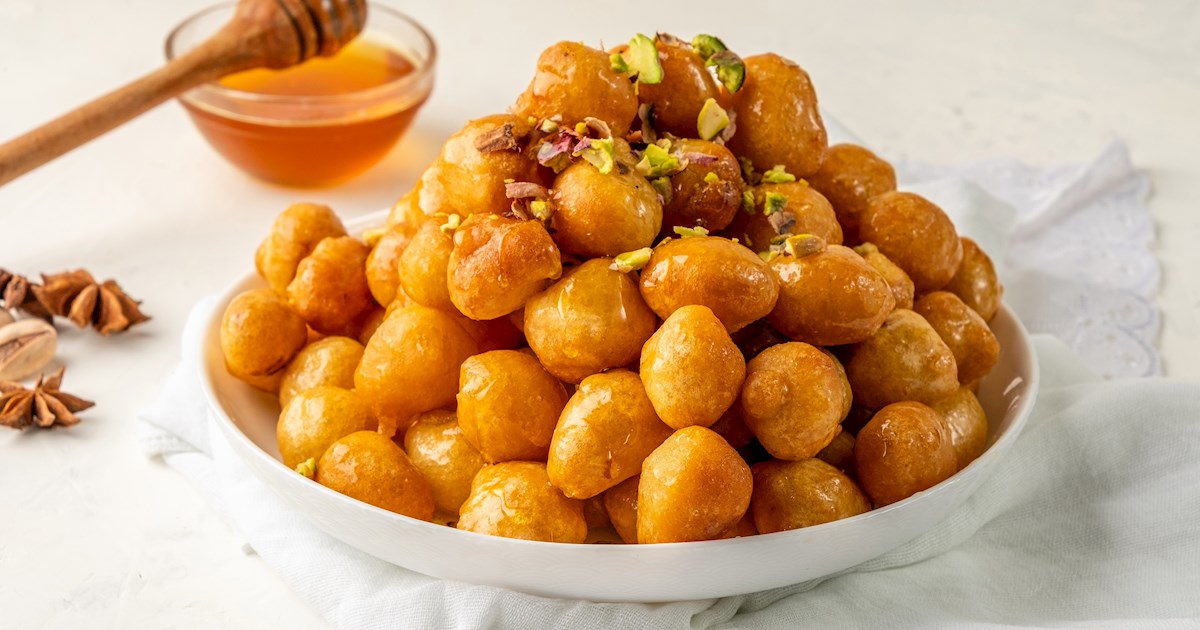
Where to Find Authentic Omani Cuisine
Muscat
1. Kargeen Restaurant
- Ambiance: Traditional Omani setting with outdoor garden seating.
- Specialties: Harees, Shuwa, and a variety of grilled meats.
- Location: Madinat Sultan Qaboos, Muscat.

2. Bait Al Luban
- Ambiance: Housed in a restored Omani house overlooking the Mutrah Corniche.
- Specialties: Omani breakfast platters, Halwa, and seafood dishes.
- Location: Mutrah Corniche, Muscat.

3. Ubhar Restaurant
- Ambiance: Modern with traditional Omani décor.
- Specialties: Majboos, camel meat dishes, and contemporary takes on classics.
- Location: Al Kharjiyah Street, Muscat.

4. Bin Ateeq
- Ambiance: Traditional floor seating in private rooms.
- Specialties: Shuwa, Mashuai, and a variety of rice dishes.
- Location: Al Khuwair, Muscat.
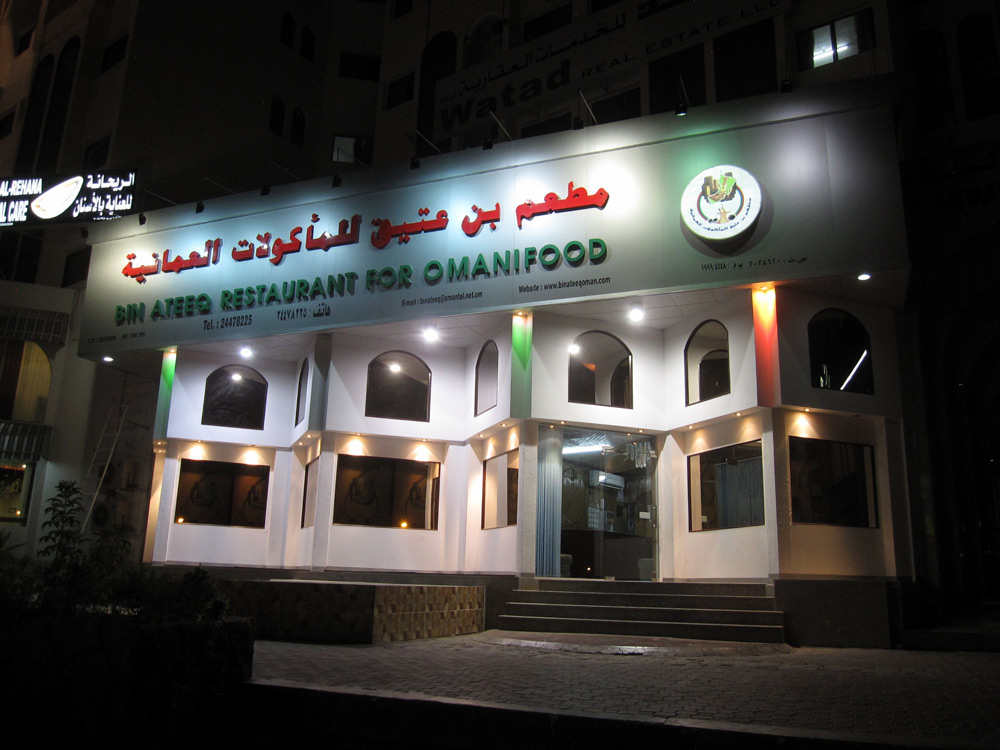
Nizwa
1. Al Mandi Al Dhahabi
- Specialties: Mandi and grilled meats.
- Location: Near Nizwa Fort.

Salalah
1. Ba’al Bek Restaurant
- Specialties: Fresh seafood and Lebanese-inspired Omani dishes.
- Location: As Salam Street, Salalah.

Sur
1. Zaki Restaurant
- Specialties: Mashuai and other seafood delicacies.
- Location: Near the seaside promenade.

Street Food and Markets
Mutrah Souq, Muscat
- What to Find: Mishkak skewers, fresh fruit juices, and traditional sweets.
- Tip: Evening is the best time to experience the vibrant atmosphere.

Nizwa Souq
- What to Find: Local dates, Halwa, and spices.
- Tip: Visit on Friday mornings for the traditional livestock market.

Tips for Food Lovers
Dining Etiquette
- Right-Hand Use: Eat with your right hand, as the left is considered unclean.
- Sharing Meals: It’s common to share dishes; and accept offers as a sign of respect.
- Removing Shoes: If dining in a traditional setting, you may be required to remove your shoes.
Dietary Considerations
- Alcohol: Not commonly served outside of hotels and high-end restaurants.
- Vegetarian Options: Available but limited; communicate dietary needs.
- Water: Opt for bottled water when dining out.
Dining Times
- Lunch: Main meal of the day, usually between 1:00 PM and 3:00 PM.
- Dinner: Lighter meal, often after 8:00 PM.
Culinary Experiences
Cooking Classes
- Masaqat Omani Cooking School: Offers classes on traditional Omani dishes.
- What You’ll Learn: Preparation of Shuwa, Halwa, and more.
Food Festivals
- Muscat Festival: Held annually from January to February, featuring food stalls and cultural performances.
- Salalah Tourism Festival: Showcases regional dishes during the Khareef season.
Conclusion
Exploring Omani cuisine is more than just a culinary journey; it’s an immersion into the country’s rich heritage and hospitality. From the communal experience of sharing Shuwa during festivities to enjoying street-side Mishkak by the seaside, each dish tells a story of Oman’s diverse cultural tapestry.
Whether you’re a seasoned foodie or a curious traveler, Oman’s gastronomic delights offer something for every palate. So pack your appetite and embark on a flavorful adventure through this Middle Eastern gem.
We hope this guide enhances your culinary exploration of Oman. Bon appétit!
